Pleat pants & natural dyeing
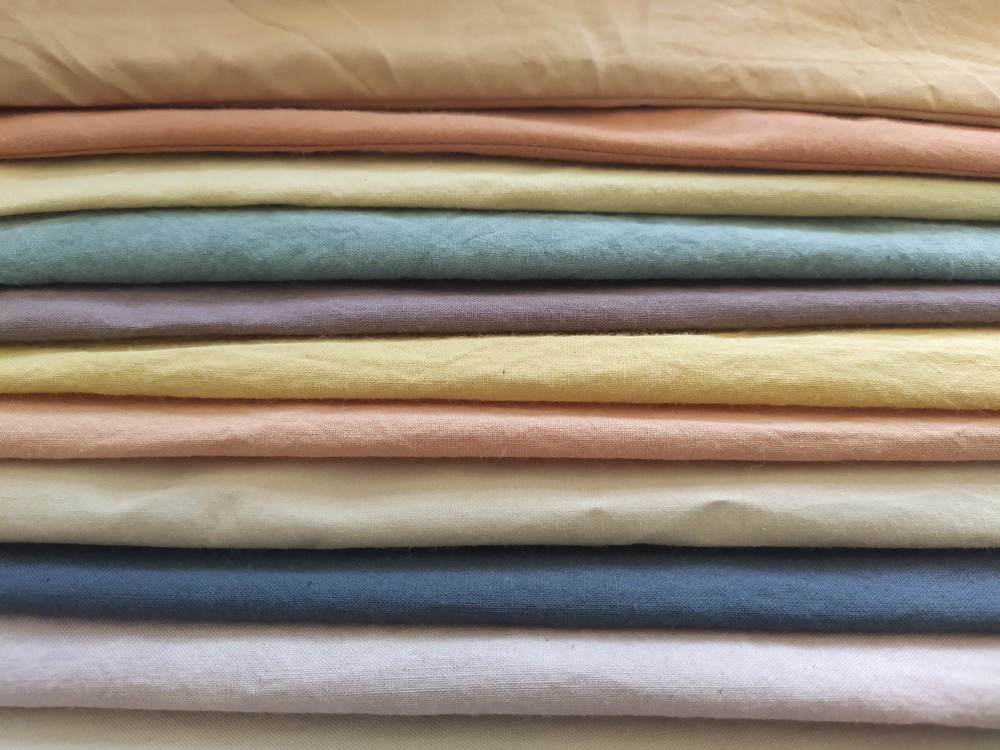
For this new sewing pattern Pleat as well as the kids collection, I have decided to sew the vast majority of the prototypes with organic fabrics dyed using dye plants or kitchen leftovers.
![]()
Natural dyeing is an activity that I really enjoy and to practice it as much as possible I integrate it into my work. It's ecological and has no negative impact on the planet and your skin. The dye bath after use can be rejected in the ground.
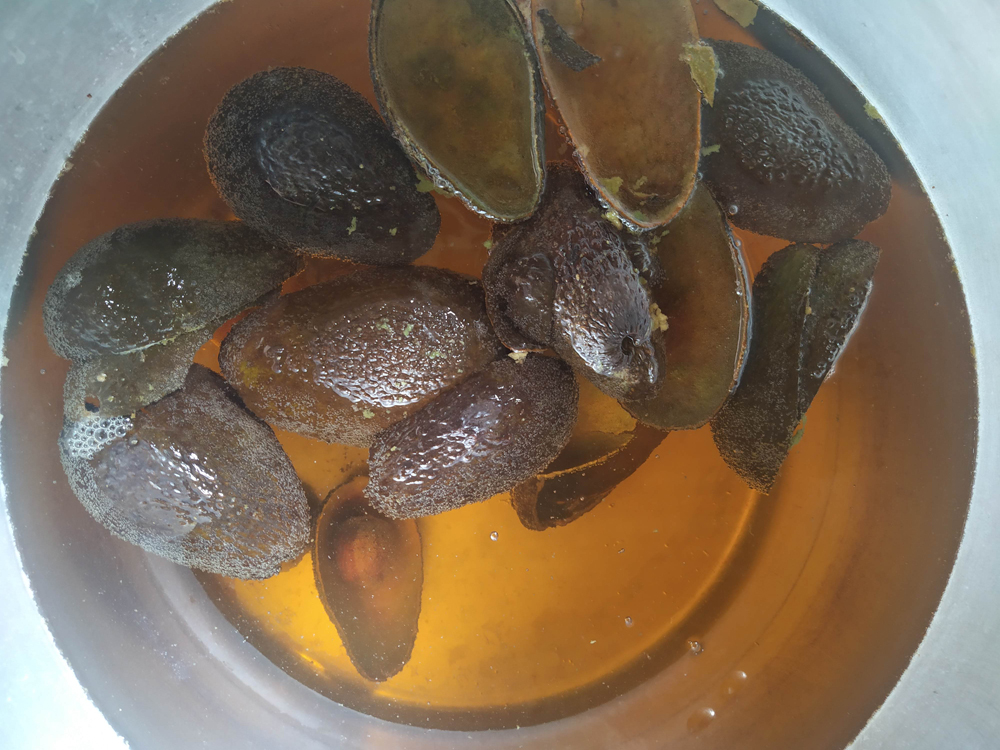
Unfortunately, I didn't take many pictures during the process. Yet I have dyed miles of fabric! This added to my workload because in addition to sewing no less than 20 prototypes, I also dyed no less than 30 meters of fabric in a whole range of colours.
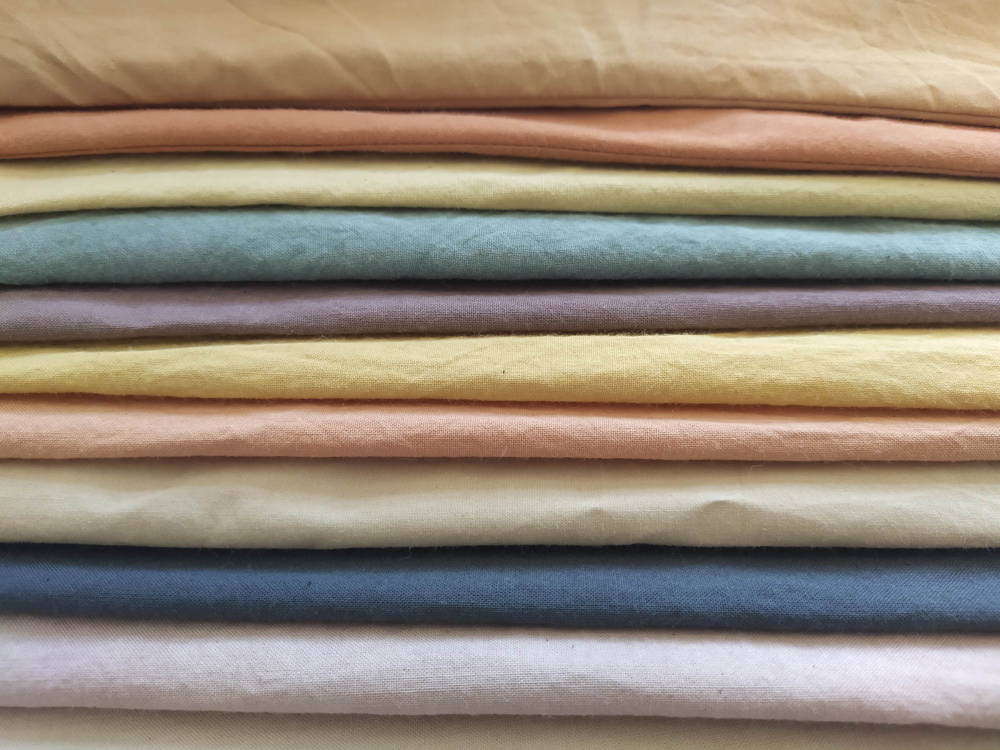
In the image above, you can see the stack of prototypes and the beautiful color swatch it creates. I used birch leaves for the yellows and greens, walnut hulls (very diluted) first bath for the beige and second bath to smear some colors, madder root for the pink/purple, onion skins for orange, avocado for pinkish beige, indigo for blue, etc. Some dyes require to mordant the fabric before and others no.![]()
Having the most neutral approach possible in my work is very important to me. I try as much as possible to use fabrics from my stock, organic fabrics, to recycle and to dye with natural dyes.
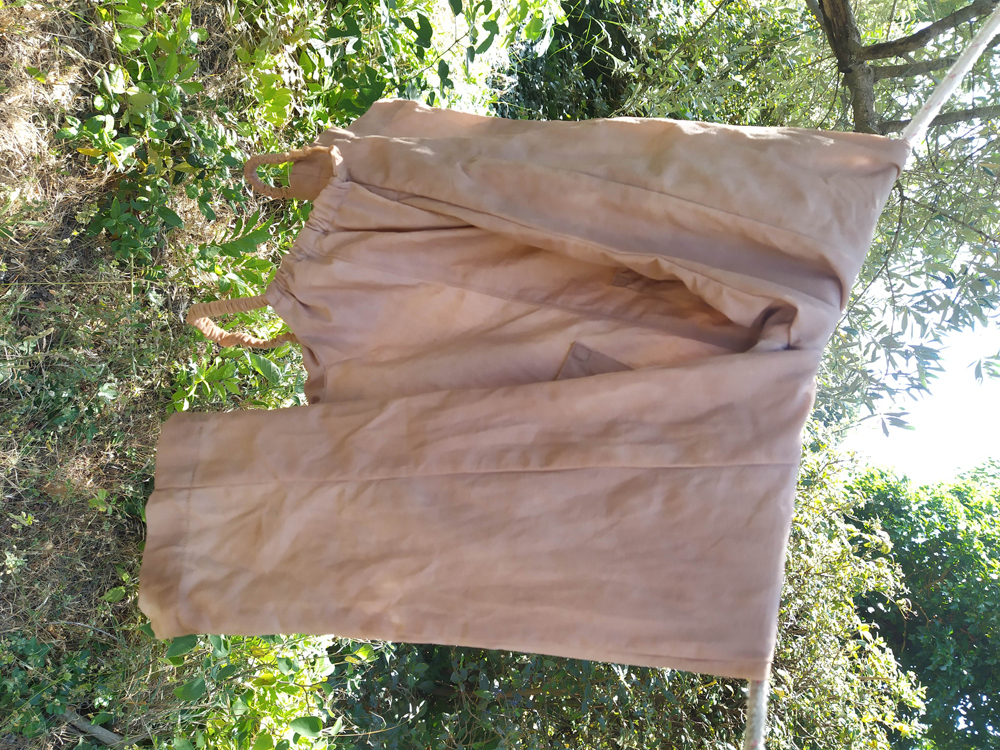
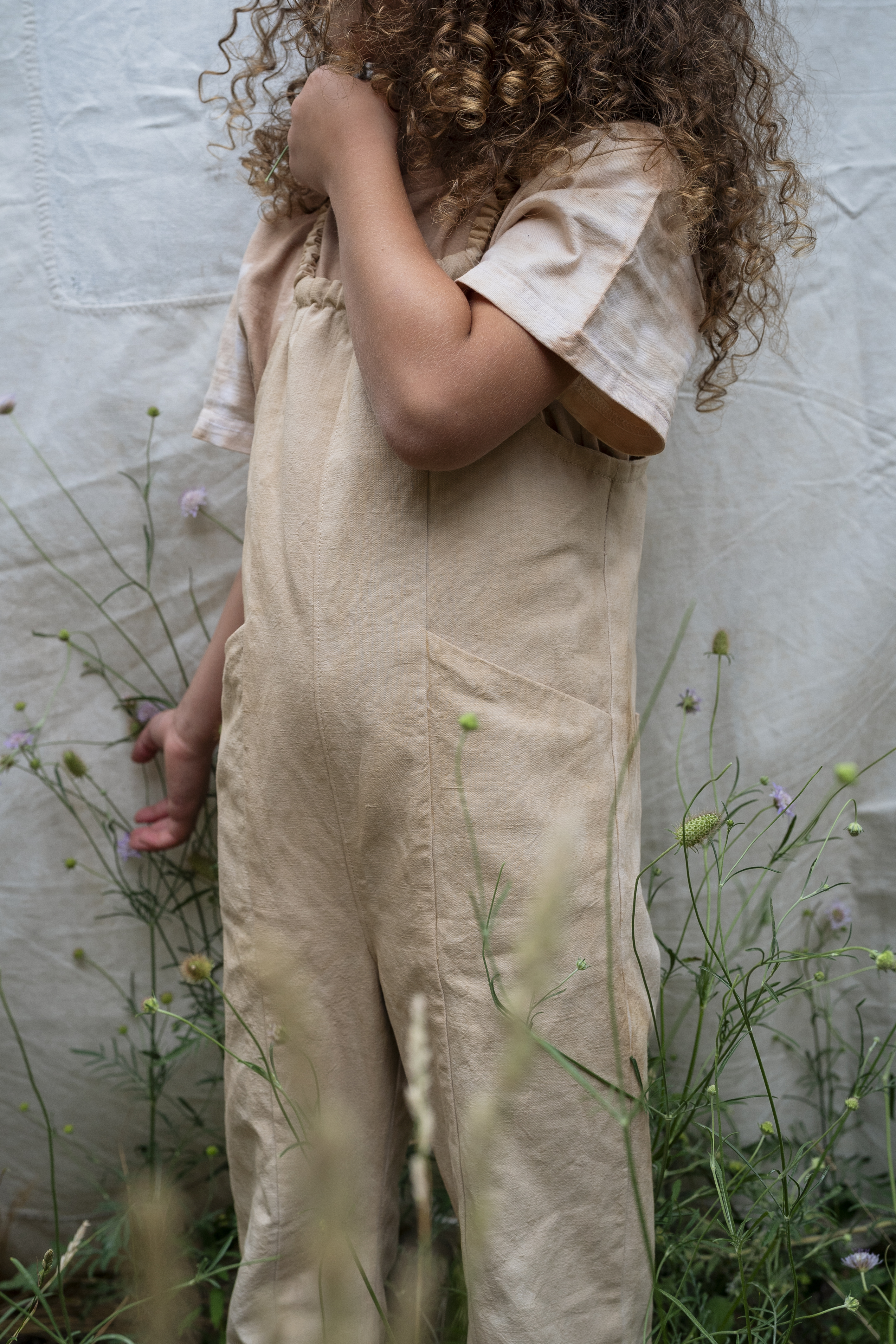
Above a prototype dyed with avocado skins and pits to obtain a pinkish beige. The prototype is sewn in an old cotton sheet which means that the dye did not take evenly but I really appreciate this worn and aged aspect that it gives to the garment. Keep your avocado skins and pits in the freezer and when you have enough use them to dye !

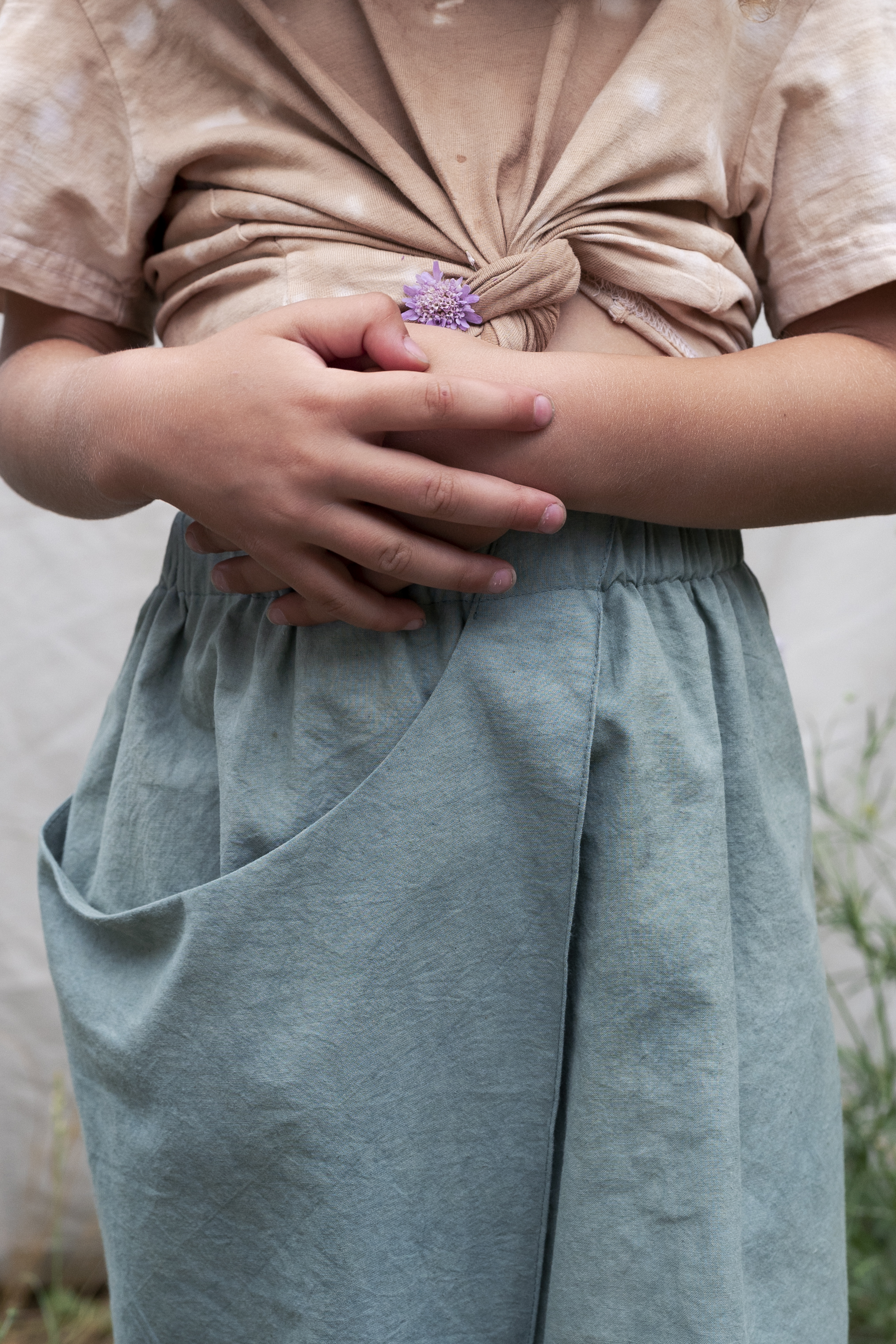
Above two prototypes dyed with indigo. This top one is the prototype worn by the dancer on the video on the home page. This color actually comes from a failed indigo vat ;-) but I'm pretty happy with my failure!
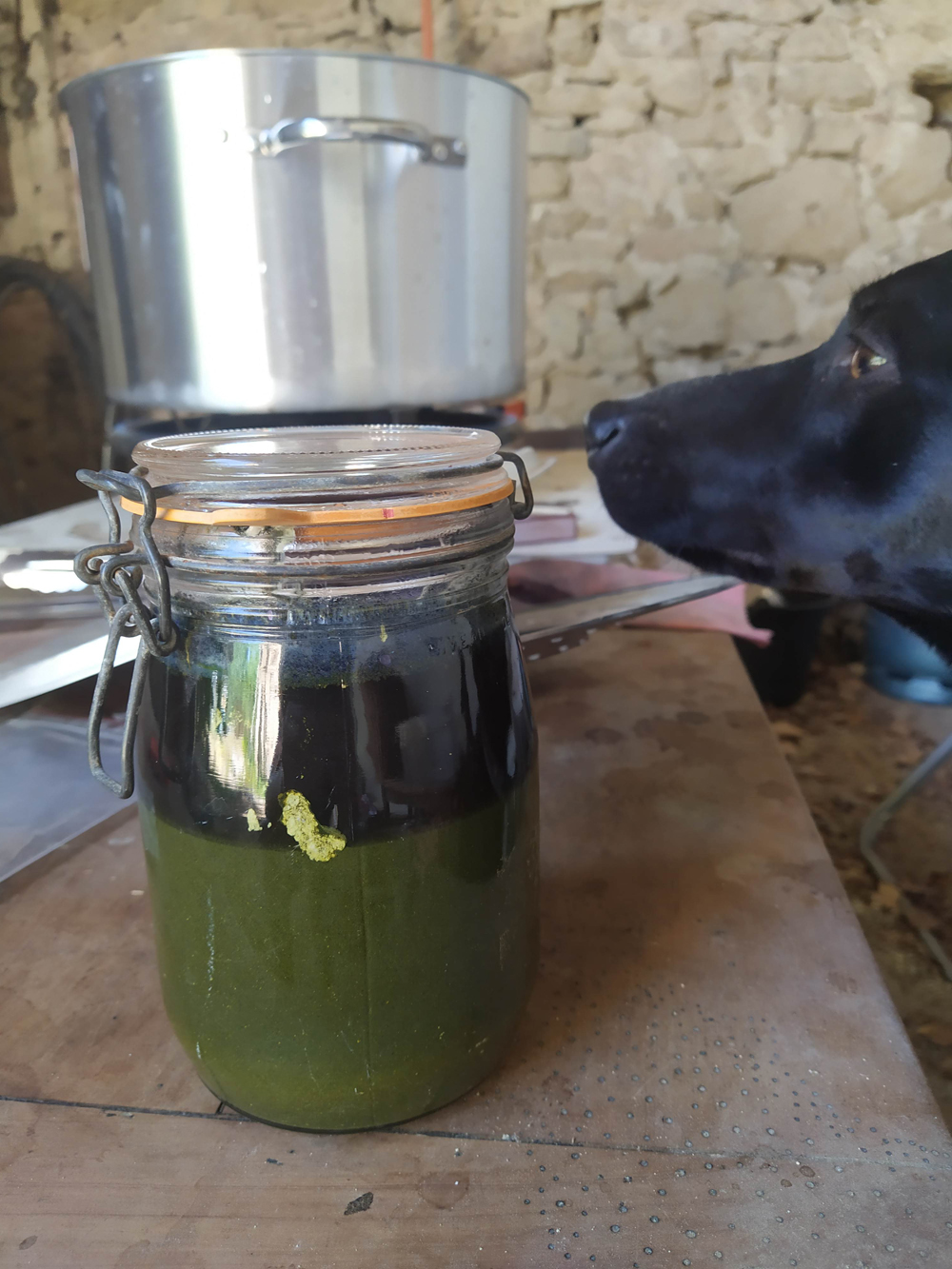
Bobby my little assistant had already smelled failure.
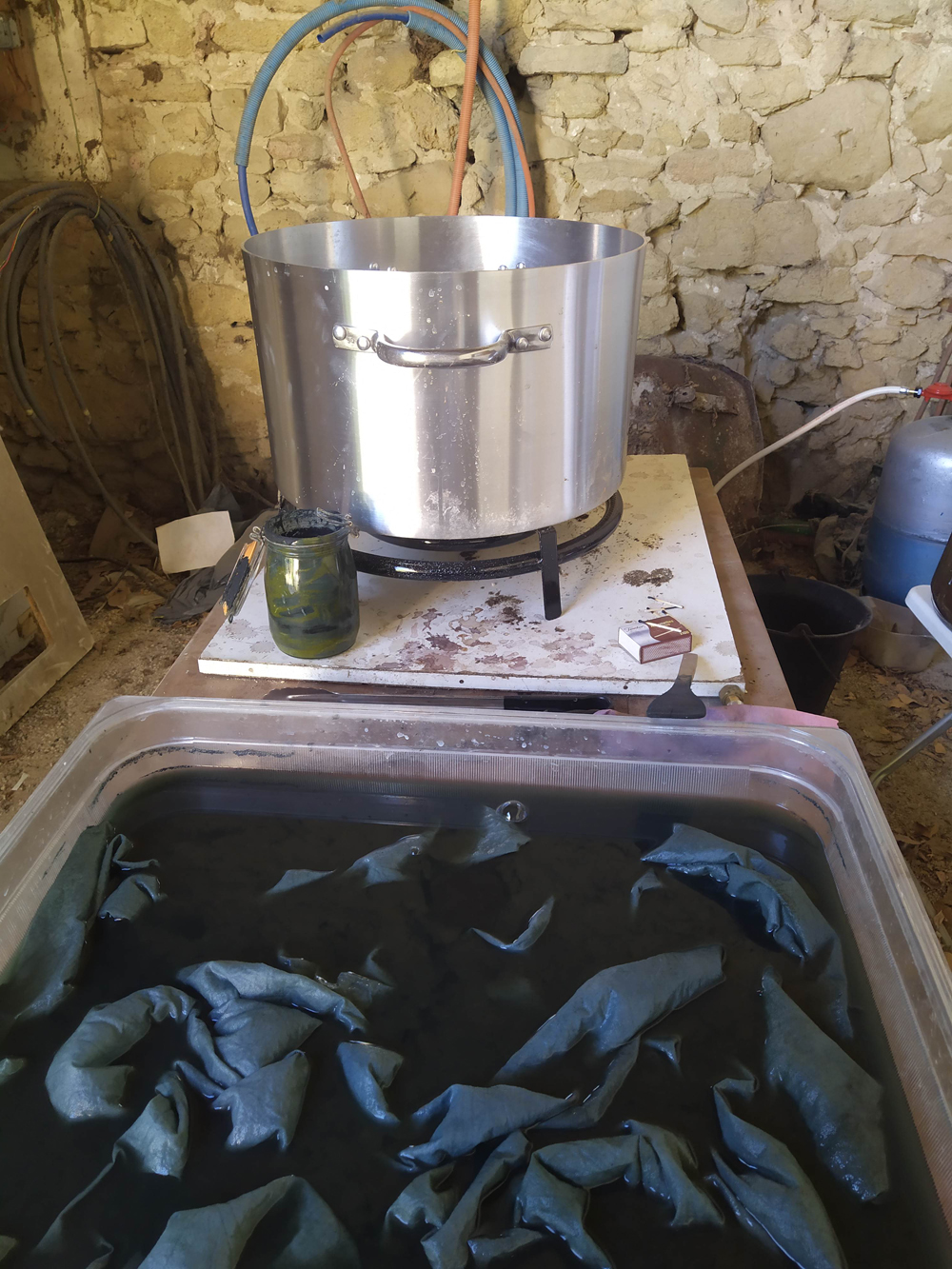
![]()
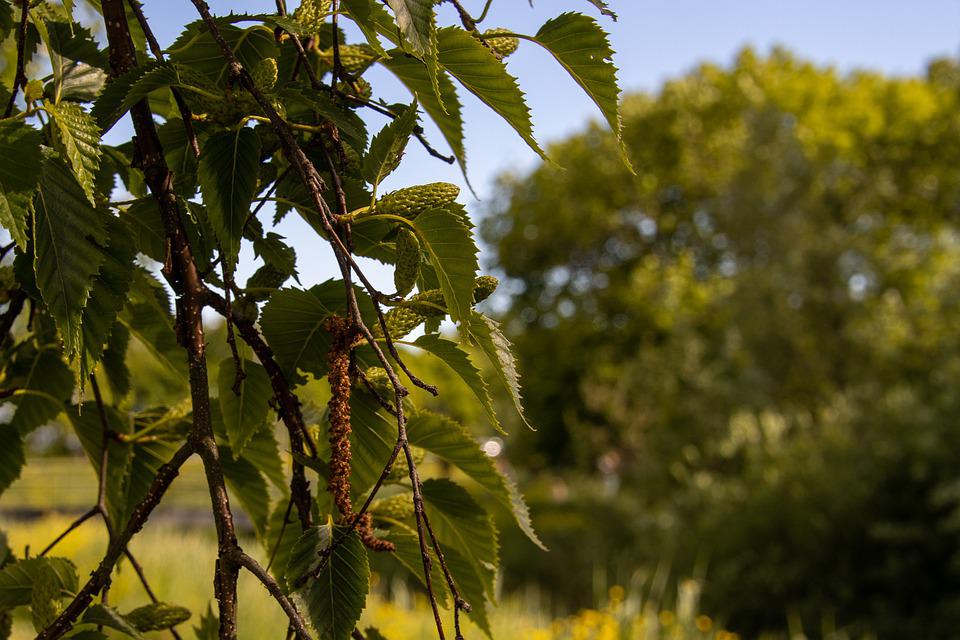

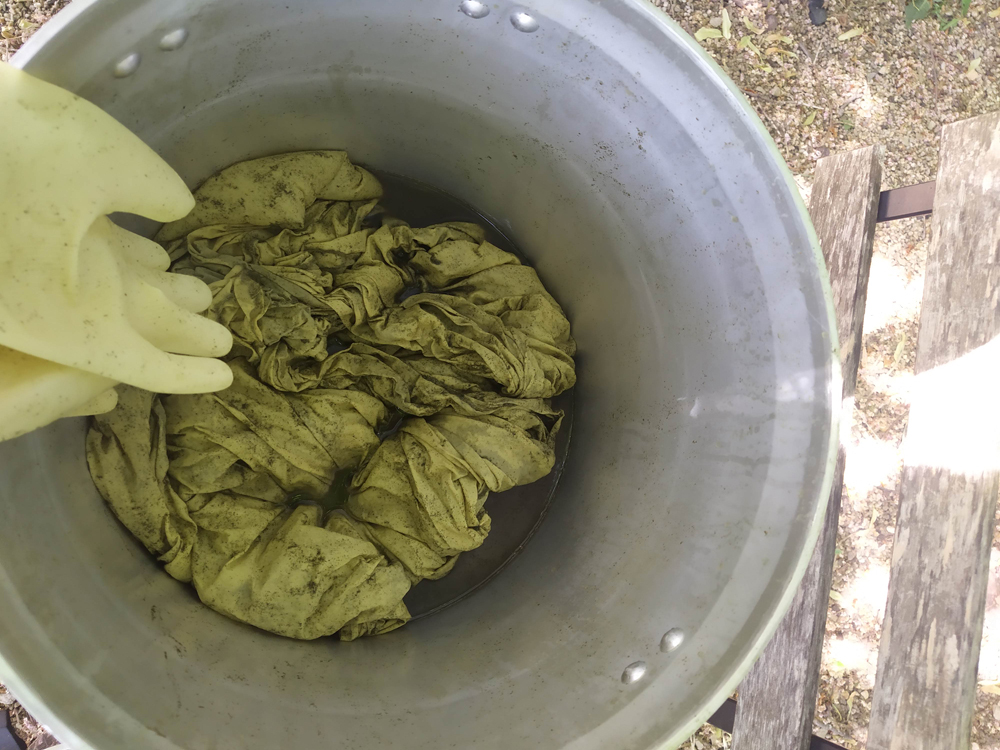
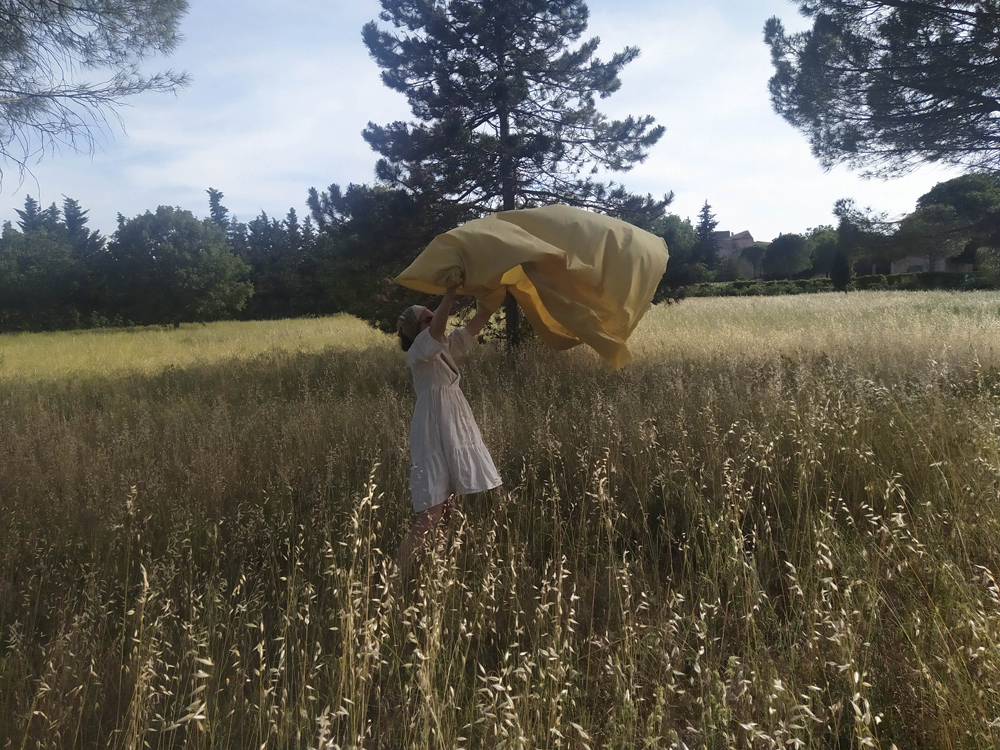
With birch leafs you can obtain this magnificent yellow. You have to mordant the fabric first. In the case of vegetable fibers such as cotton, linen or hemp, the recipe is as follows: 20% alum and 10% potassium carbonate. Dissolve the alum and the carbonate in lukewarm water, immerse the fiber previously washed with soda crystals, raise the temperature to 80-90°C for 45 to 60 minutes, stirring occasionally. Let cool and rinse fibers.

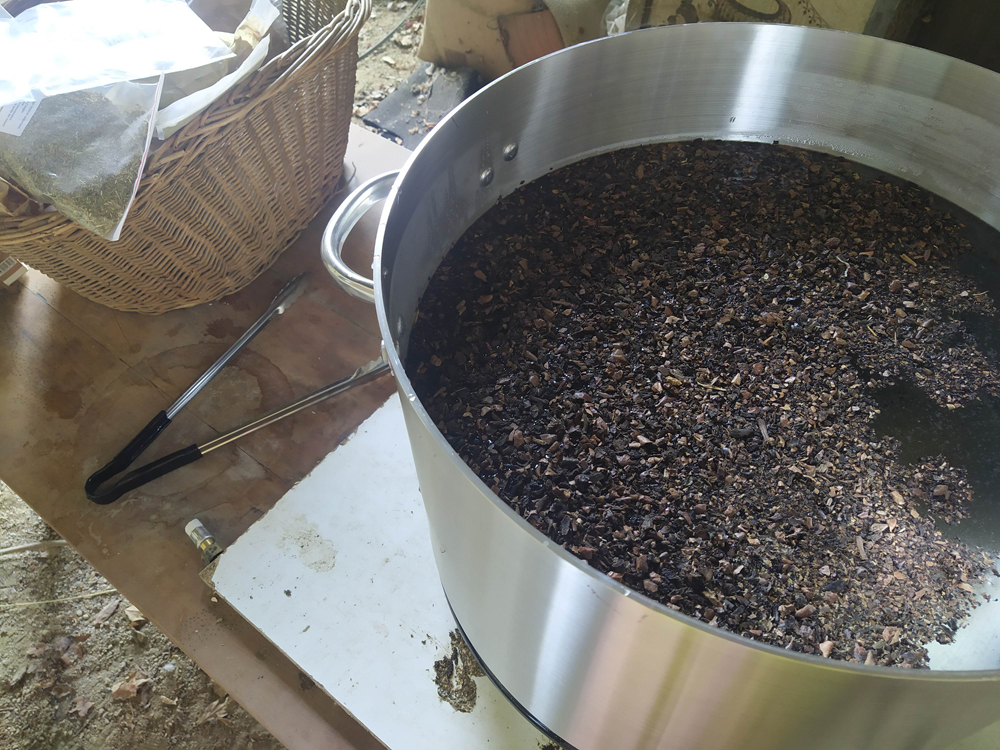
I got this pale green by using the birch leaf dye bath a second time to get a much less intense yellow and then soaked the fiber in a second dilute bath of walnut hulls to "smear" it.
I had obviously done some tests beforehand on pieces of fabric.
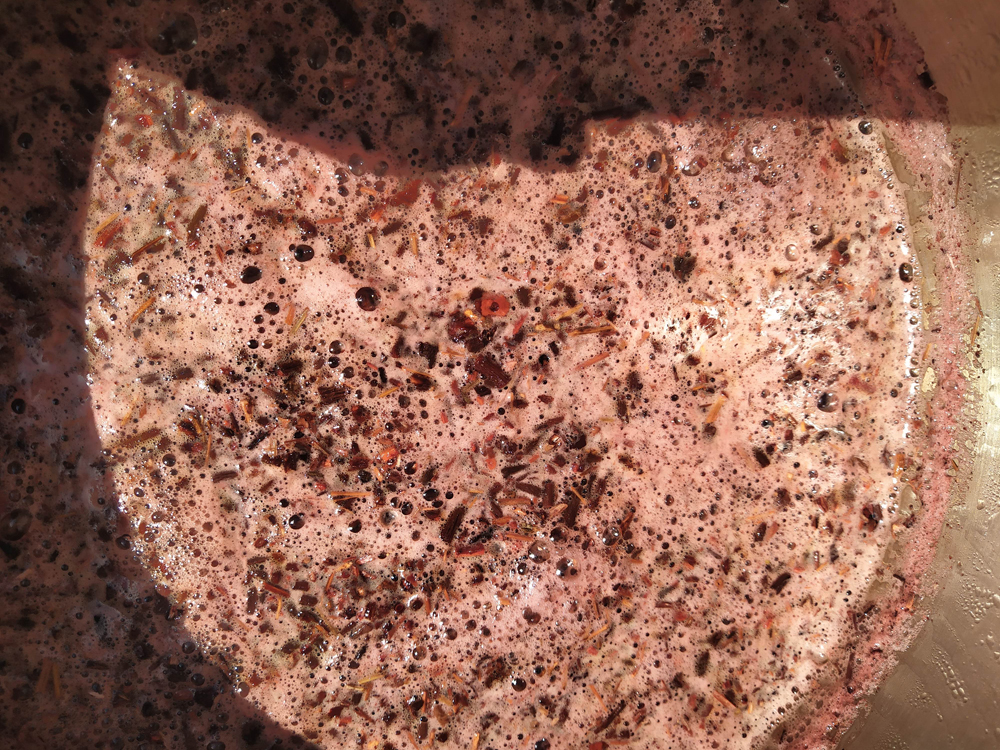
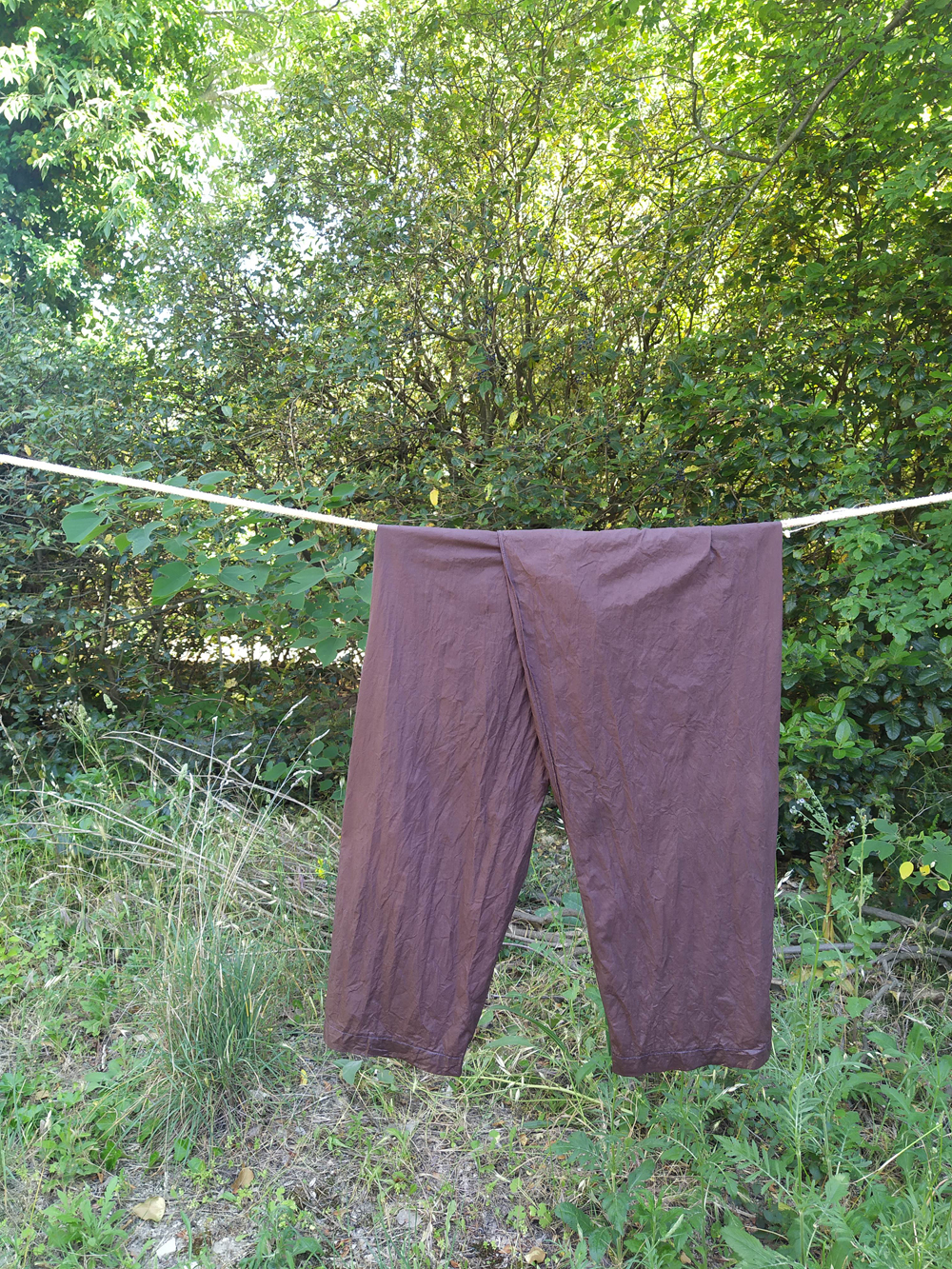
First bath of madder roots + iron sulfate.
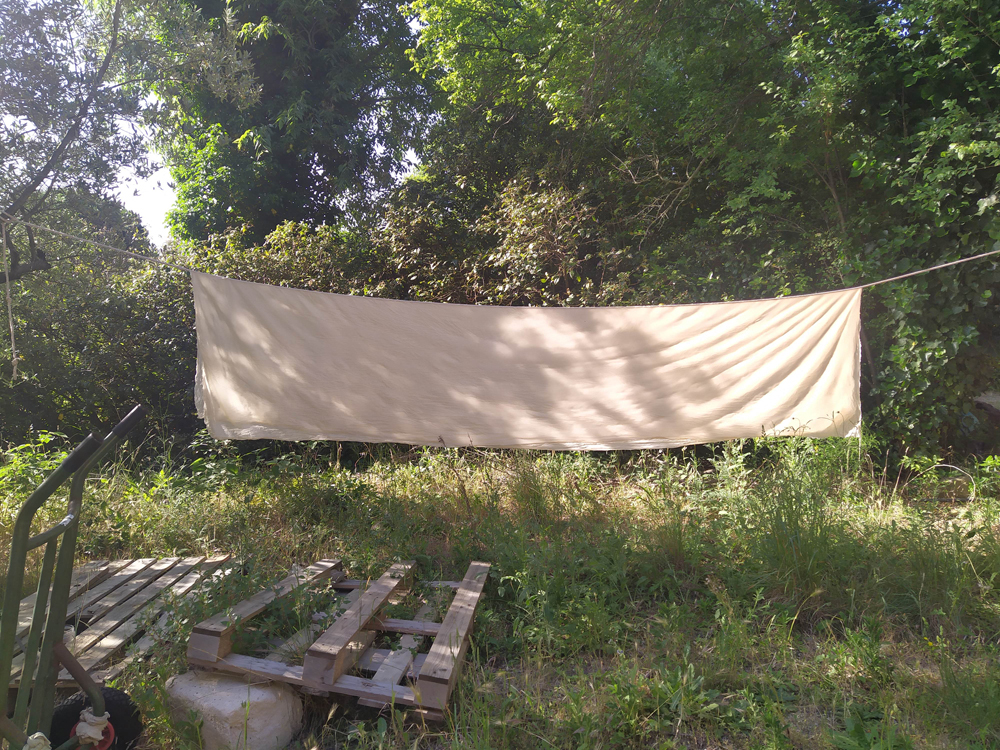
Second bath of madder roots + iron sulfate. I sometimes dyed the fabric before sewing it and sometimes dyed the prototype, it's obviously better to choose the first way because a very hot dye bath can shrink the fabric and therefore reduce the size of the prototype.

Here you can appreciate the difference between a first bath and a second bath.
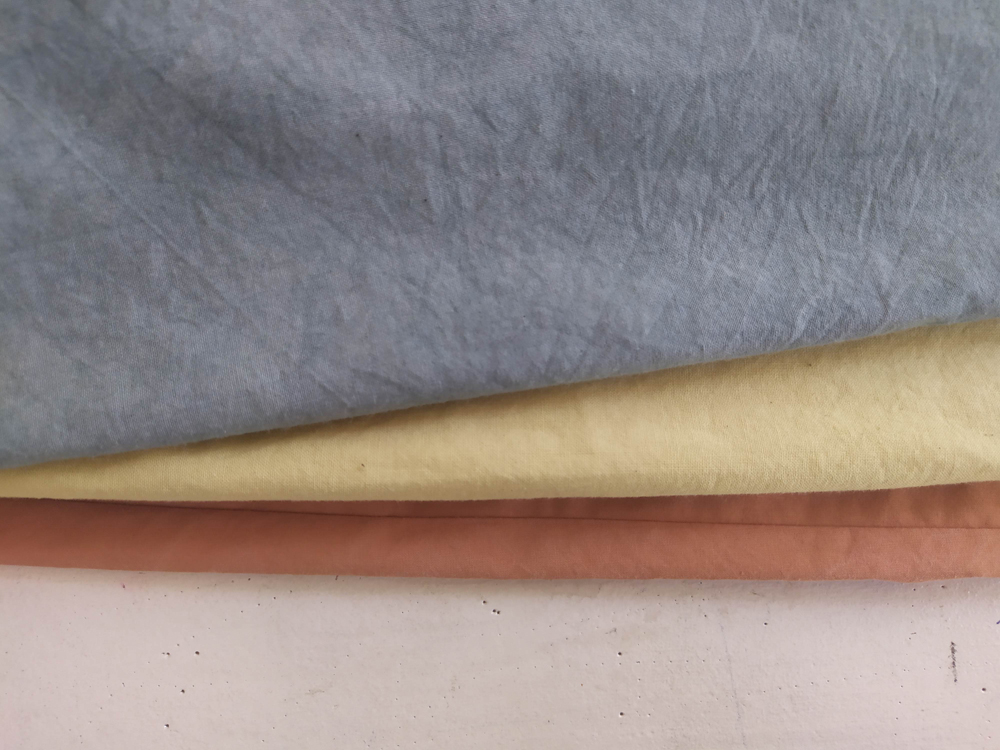
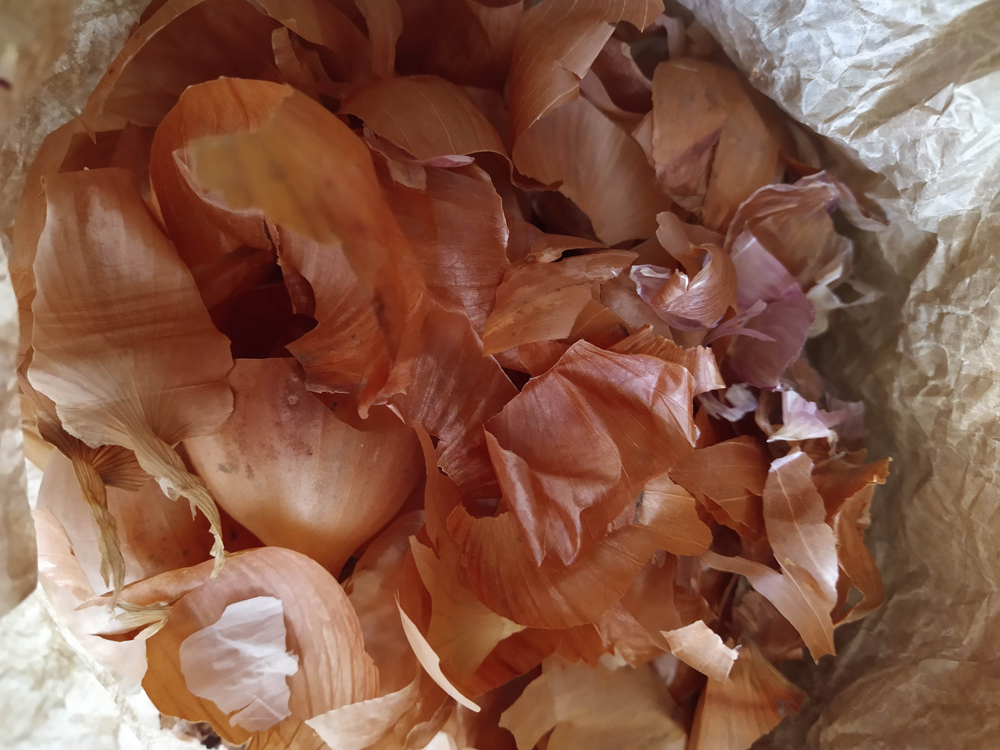
Voilà, I do not go around all the prototypes but I just wanted to share with you a little of this experience.
I take this opportunity to specify that the T-shirts photographed with the Pleat pattern are sewn from the Primo pattern in a cropped version or from the Jeanne T-shirt. The fabrics used come from Siebenblau and are cottons that have not received any treatment or dyeing. It does not get more natural in fabric production. Since no dyes or bleaching agents are used in the production of the fabric![]()
There you go, I hope you like the Pleat pants and the new kids collection and see you soon for new patterns ;-)

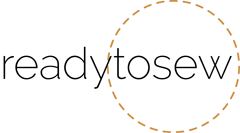
ps: je ne connaissais pas votre travail et je découvre vos créations qui sont très jolies et semblent intemporelles.
Belle journée à vous et bonne continuation.